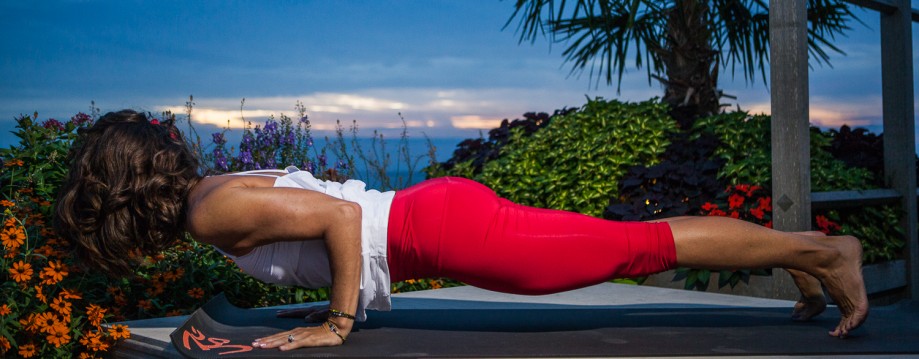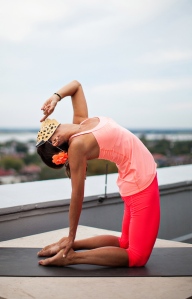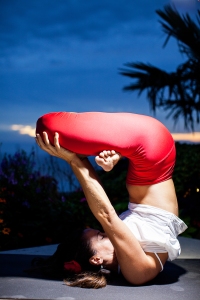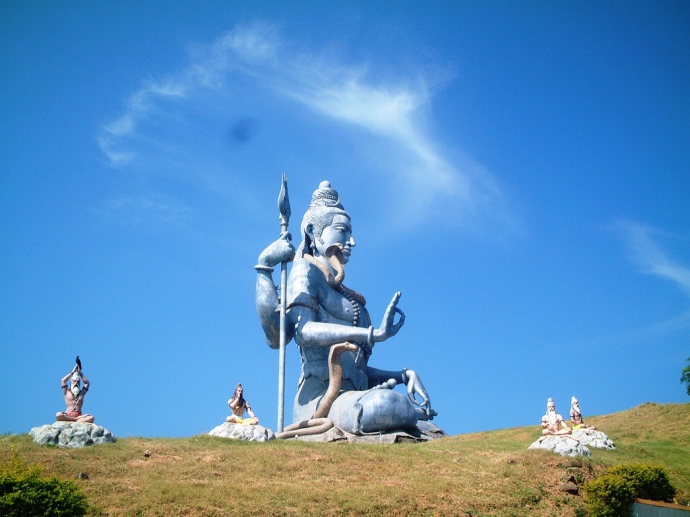I recently inherited a parrot from my husband’s family. They have had this bird for over 40 years. I have been working on bonding with him. During this process, what I have really been working on is communication without words. He does speak, but he probably doesn’t comprehend the use of his words, as he will often say “Hello” as I am leaving. But he has mastered the appropriate greeting for my return. He joins our dogs in barking to announce my arrival. I guess he figured since they do it, so should he. It’s very funny seeing your parrot bark. But than again I see people mis-use language all the time. I also see people mis-use inflection and mannerism with their words. So why is it we are so dependent on words instead of what they evoke? We use words to mask so much of what we really mean. This is why I love the stripped down simplicity of a mysore yoga practice. There are no words, at least none spoken, but there is a language. It’s a beautiful language filled with support, encouragement and understanding.
We have become too dependent on words. There is a big difference between just speaking words and actually communicating. Communicating takes listening. You won’t always hear in words what the person actually means. Just like my parrot can’t always tell me what he wants. I have to become a very good listener via body language, and the use of his feet and beak to really understand what he wants. If not, then I usually end up being the recipient of a harsh bite. This same thing happens in yoga sometimes. If you aren’t being an active listener to the teacher, or the warnings from your body then you may get bitten by the hard truth of injury.
I have taken classes over the years where the teacher offers just words; no inflection in their voice, no adjustments through their hands and no darshan either (which is a loving glance). I have found through the years of study with my teacher, Tim Miller, that during his mysore classes, he often uses darshan as a tool, for encouragement. His hands on adjustments also offer communication. I know that when my teacher touches me firmly and with confidence, it means he has confidence in me – that I am capable of going where he is trying to take me. It says to me loud and clear “You can do this.” So what about inflection? I can tell you that my parrot knows how to use it, when he’s not getting the attention he wants, he will get louder and louder until he is noticed. Just the same, I can calm him down with a softer voice and a gentle touch. There is nothing worse to me then a monotone teacher. It sounds to me like they are bored, which I do believe some teachers are. They have lost their “Joie de vivre” for teaching. Pitch and tone can go a long way in expressing the joy there should be in a good practice.
I recently taught a class that seemed like they were all visual learners. It was as if 70% of the class had no ears, only eyes to guide them. Imagine how complicated life must be if they can only understand conversations by what they see and not by what they hear. Where has the art of listening gone? When did we become so dependent on sight. The problem with sight is it is filtered through our preconceived mind (samskaras). This is why people recount a story differently even though they all witnessed the same scene unfold. Sight is not reliable, but it is helpful. Even sound is not terribly reliable, because you can read between the lines. But your sense’s are reliable. In order to understand my pets and my pets to understand me, we have to sense each others needs. I have a house full of animals and none of them speak english, but they all speak patience, thank goodness. Because we humans are sometimes selfish in our interpretations of our animals needs. They are so patient with my ignorance of their world and their communication. They however comply to everything I ask, in english. They are good listeners.
Mysore yoga gives us a chance to become better listeners. We have the opportunity to listen to our breathing, thoughts, sensations and our dreams. The quiet of the practice allows room for patience. When in a classroom environment where the teacher is barking commands there is little room for patience. People often feel rushed in a led class, but not mysore. It’s a beautiful practice that has movement as it’s language. Not facial expression, not words, not inflection – just movement. It’s like a liquid conversation. I’d say it’s like a painter painting. The paint is going on the canvas, but it’s blending with other colors. During a mysore practice, our movement blends, each of our movements is like a brush stroke, each person a color. There’s a group effort in mysore style yoga even though no one is doing the same thing at any one time. It probably looks like chaos to an outsider. But for those of us practicing together it’s like a symphony. We each move a different way and experience different struggles. One instrument playing alone can make beautiful music but a symphony leaves an impression.
We need to bring the simplicity of a mysore practice into all of our practices. We need to be less dependent on what we hear and see, and more receptive to what we are feeling. A great musician feels what they are playing. The music that moves you the most did so because you felt it instead of just hearing it. It touched something inside of you. It’s no coincidence that the 4th chakra/the heart chakra is called “the unstruck sound”. This is a sound that you don’t hear with your ears. You feel this sound with your heart. That’s what we’re getting in touch with every time we do a mysore practice. The brain uses language, but the heart uses feelings.
I recently just finished reading a great book about the idea of what’s left unsaid. Yoga isn’t about what’s said, it’s about what’s not said. Enough with language. Animals are hard to understand if you are expecting to hear words/language. Animals use movements to express moods and desires. My parrot drops his head when he wants petted, or he squats low and quickly flutters his wings when he wants me to come to him. My dog raises her bum but lowers her chest when she wants to play, my cat head butts me when she wants petted. When these things fail, then animals will use sound – barks, squaks and meows, but first they trust their instincts and their instincts are to communicate with movement. Let’s try to not worry so much about what we are saying and more about what we are doing. There’s a great quote that keeps it simple “Actions speak louder than words.” Let’s take action, get on your mat and leave the words at the door. It’s just better to leave somethings unsaid.



